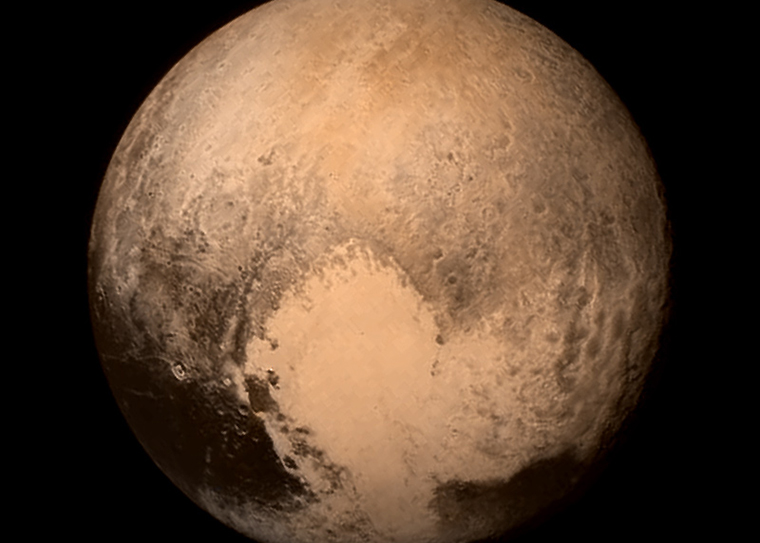2024-05-21 ワシントン大学セントルイス校

In a paper published in the journal Icarus, WashU graduate student Alex Nguyen used mathematical models and images from the New Horizons spacecraft to take a closer look at the ocean that likely covers Pluto beneath a thick shell of nitrogen, methane and water ice. (Image: NASA)
<関連情報>
- https://source.wustl.edu/2024/05/peering-into-plutos-ocean/
- https://www.sciencedirect.com/science/article/abs/pii/S0019103524000265
冥王星の海がスプートニク平原流域の窒素氷を支える塩分濃度の役割 The role of Pluto’s ocean’s salinity in supporting nitrogen ice loads within the Sputnik Planitia basin
P.J. McGovern, A.L. Nguyen
Icarus Available online 28 January 2024
DOI:https://doi.org/10.1016/j.icarus.2024.115968
Highlights
•The density of Pluto’s interior ocean affects the stress state in the icy shell above.
•The Sputnik Planitia impact basin is filled with nitrogen ice, stressing the shell.
•Ocean density (salinity) affects the response of the shell to loads.
•Models with high density predict stress states inconsistent with observed faulting.
•The density of Pluto’s ocean is likely <1100 kg/m3.
Abstract
The existence of a subsurface water ocean on Pluto has been inferred on numerous grounds. The characteristics of such an ocean are vital inputs for various types of models that are carried out to illuminate the interior structure and evolution of Pluto, especially in light of the complementary relationship between the dimensions of the ocean and an outer water ice shell. In particular, models of loading of the Sputnik Planitia (SP) impact basin by nitrogen ice infill require knowledge of ocean properties such as density, and previous studies did not consider the potential densification of Pluto’s ocean from salinity. Here we carry out analytic and Finite Element Method (FEM) modeling of loading deformations and stresses in an ice shell lithosphere, to determine the conditions, including ocean density, that best account for the observed distributions of tectonic features around the SP basin. Our results, while generally consistent with those of previous studies, provide more complete constraints on the initial basin depth (no deeper than 6 km, with most likely values in the 3–4 km range). Further, we find that increasing density (salinity) generally increases disagreement between model tectonic predictions and observations, and therefore we infer modest salinity-based densification of Pluto’s ocean (ρocean < 1100 kg/m3) relative to values seen or inferred on other worlds.




